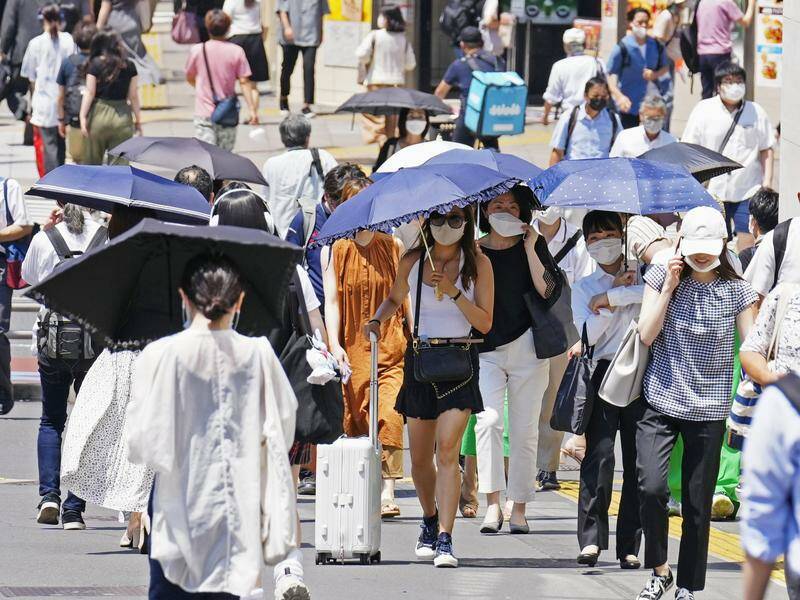
Japan has recorded its highest temperature of 41.8C, prompting the government to advise residents to stay indoors and promise steps to ease weather-related damage to rice crops.
Subscribe now for unlimited access.
or signup to continue reading
See subscription optionsReadings in the eastern city of Isesaki, in Gunma prefecture, surpassed the previous high of 41.2C marked last week in the western city of Tamba in Hyogo prefecture, the country's meteorological agency said.
So far this summer, more than 53,000 people have been taken to hospital for heat stroke, according to the Fire and Disaster Management Agency.
"Today is murderously hot," said 63-year-old auto worker Takeshi Ishikawa, who was filling his water bottle at a fountain in central Tokyo. "If it gets to 42 degrees, it would be hotter than my bath that I prepare at 40 degrees."
Average temperatures across Japan have continued to climb after marking a record high in July for the third year in a row, while the northeastern region along the Sea of Japan has registered critically low levels of rainfall, raising concerns over the rice harvest.
High temperatures have caused a proliferation of stink bugs in some rice-growing areas, even as the government is set to officially adopt a new policy on Tuesday of increased rice production to prevent future shortages.
"We need to act with speed and a sense of crisis to prevent damage" from high temperatures, Farm Minister Shinjiro Koizumi said at a press conference.
The government will offer support for pest control and measures to tackle drought, he said.
Extreme heat in 2023 had damaged the quality of rice, causing an acute shortage last year that was exacerbated by the government's misreading of supply and demand. That led to historically high prices of the all-important staple food, causing a national crisis.
Australian Associated Press

